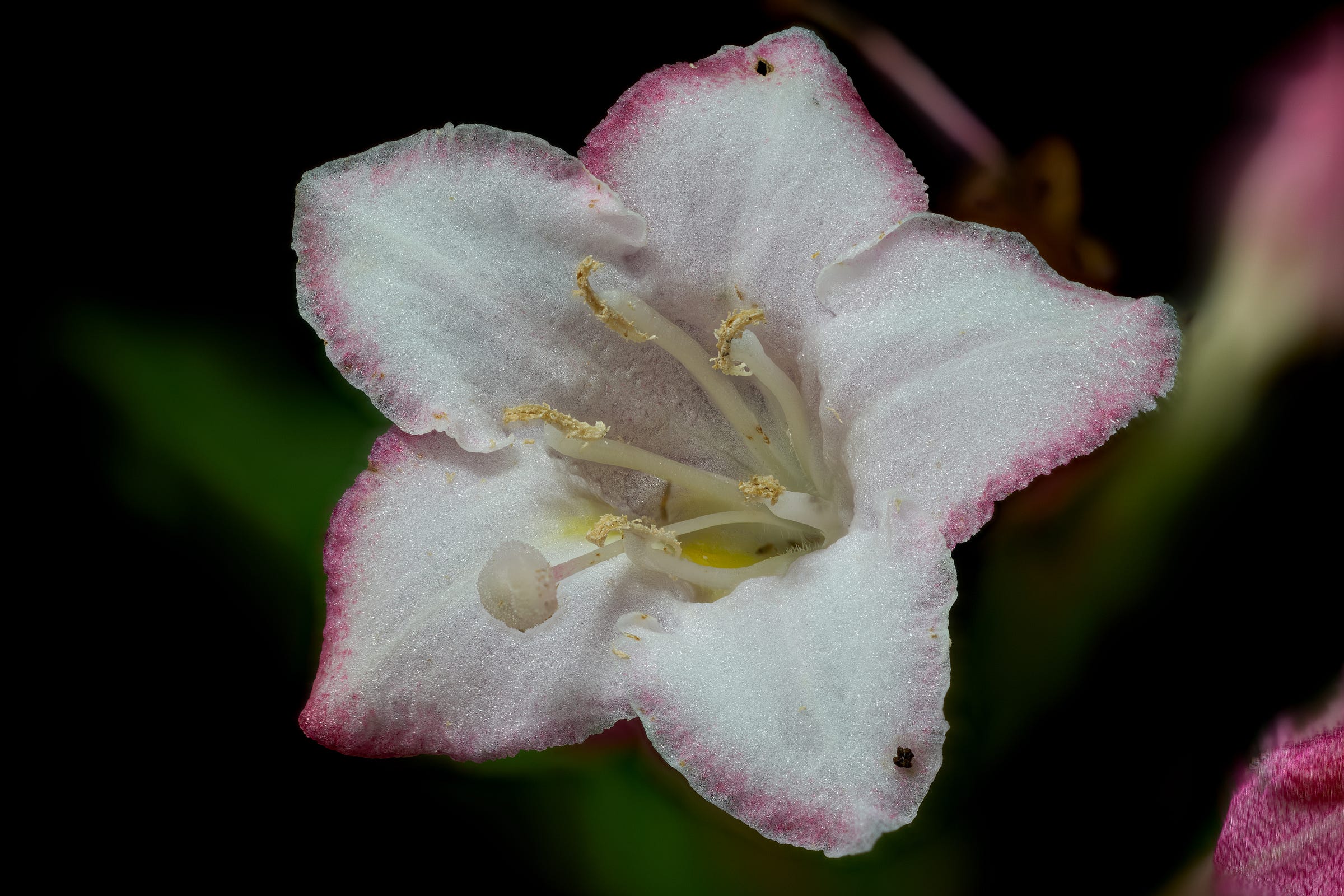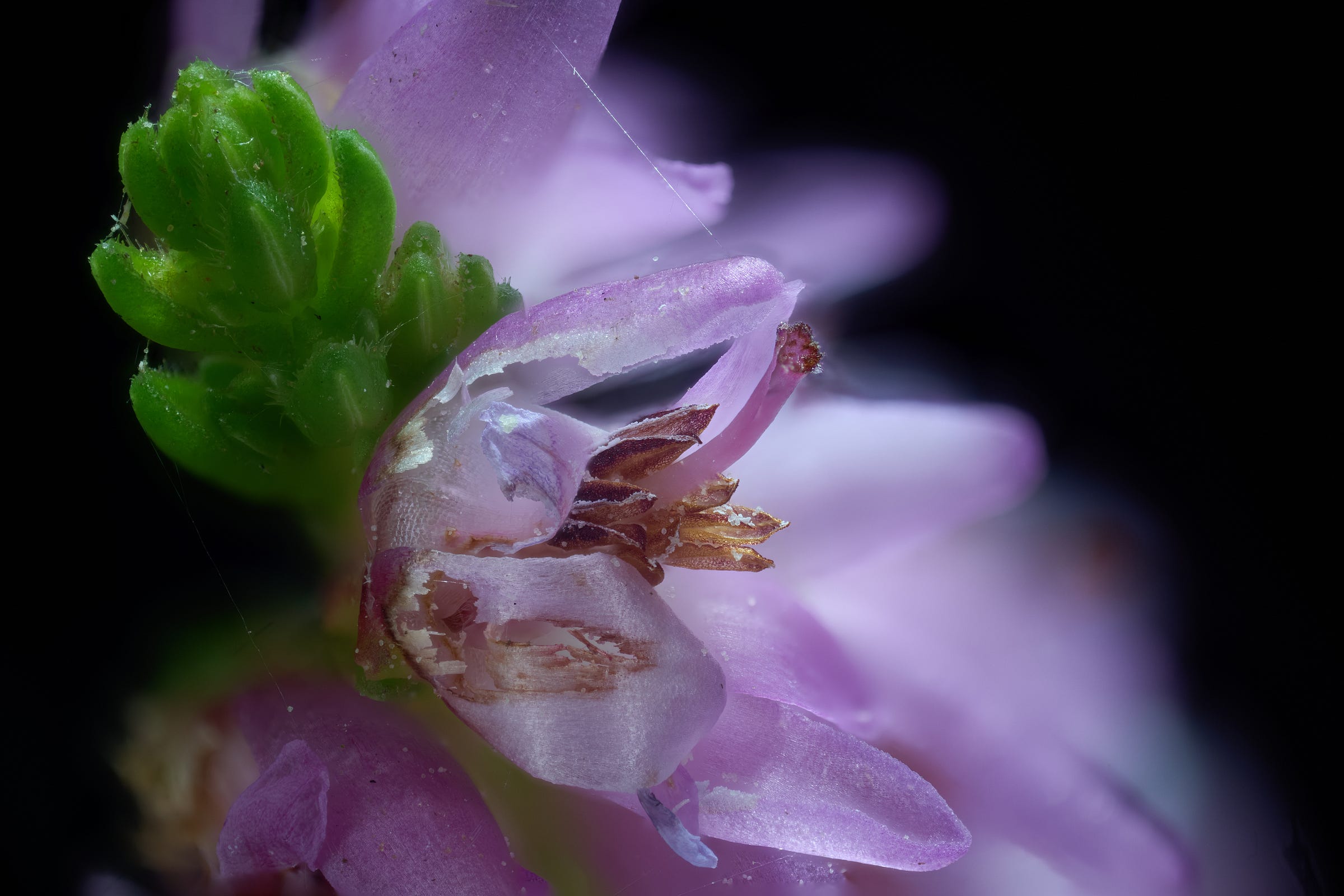We have all kinds of shrubs in our back yard, most of which I have to photograph and then look up online to find out what they are. The above is a good example. It’s blooming late in the season, and I didn’t recognize it all. The internet says it’s a weigela flower.
I photographed it using a macro lens; it’s about one-third life size on the camera sensor, so it looks huge on-screen. The actual flower is about 20mm in diameter.
I love doing macrophotography. One sees things that aren’t readily visible to the naked eye. Here’s a tiny little flower on a weed form the front yard, enlarged to about five times actual size on the camera sensor:
It was so tiny, I didn’t even realize that the flower was partly chewed up.
It takes some time to set up for macro photography. Various lenses, and lens combinations, need to be tested for sharpeners. Sometimes a lens on its own is very sharp; sometimes a combination of lenses will be very sharp. The first image was shot with an old but well-regarded lens from the end of the last century, a Contax 645 120mm Macro. It does up to 100%, life-size images.
The second image was shot with a microscope objective attached to the front of the Contax lens. Here’s another object shot with the stacked setup, a bolt head that is about 4mm across.
Finally, a bit of late-season heather flowers at about half size, shot with the Contax lens on its own.








